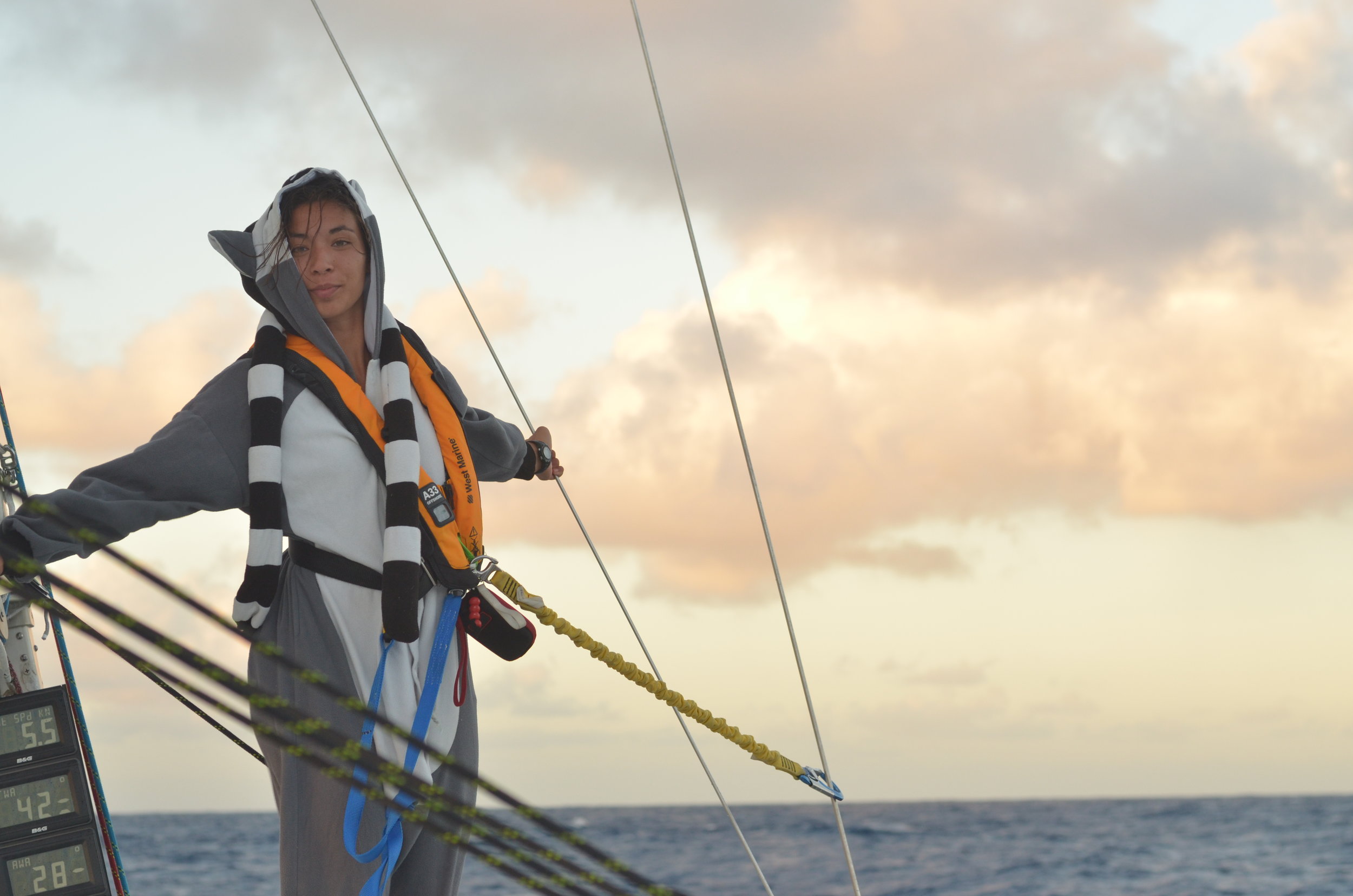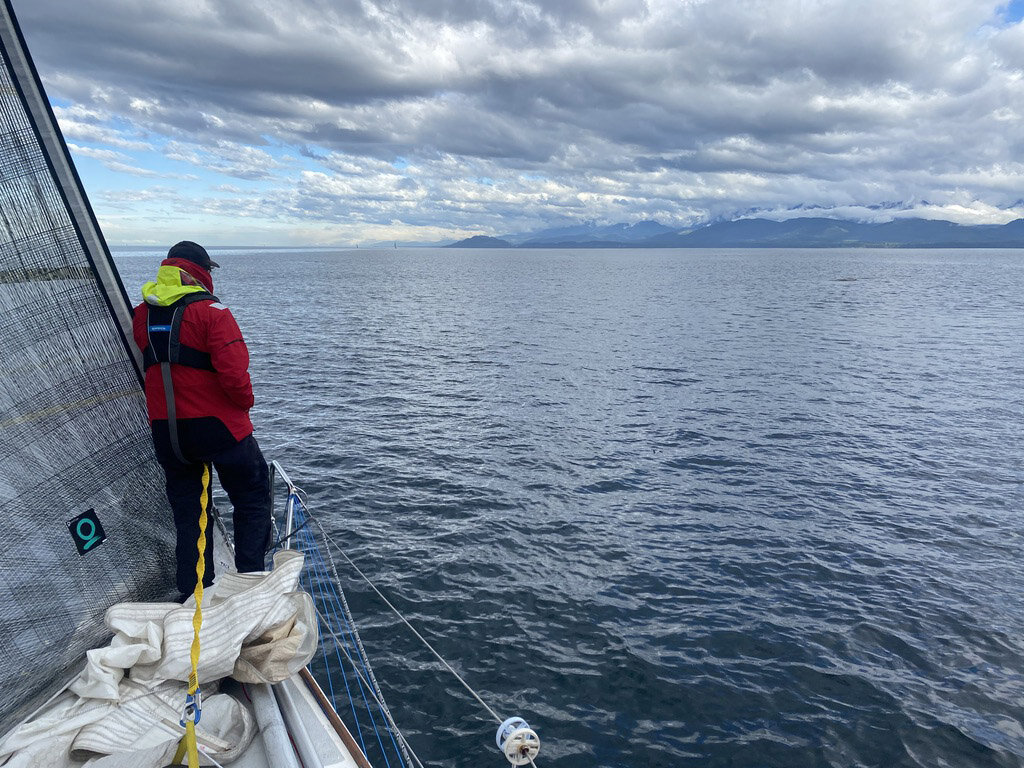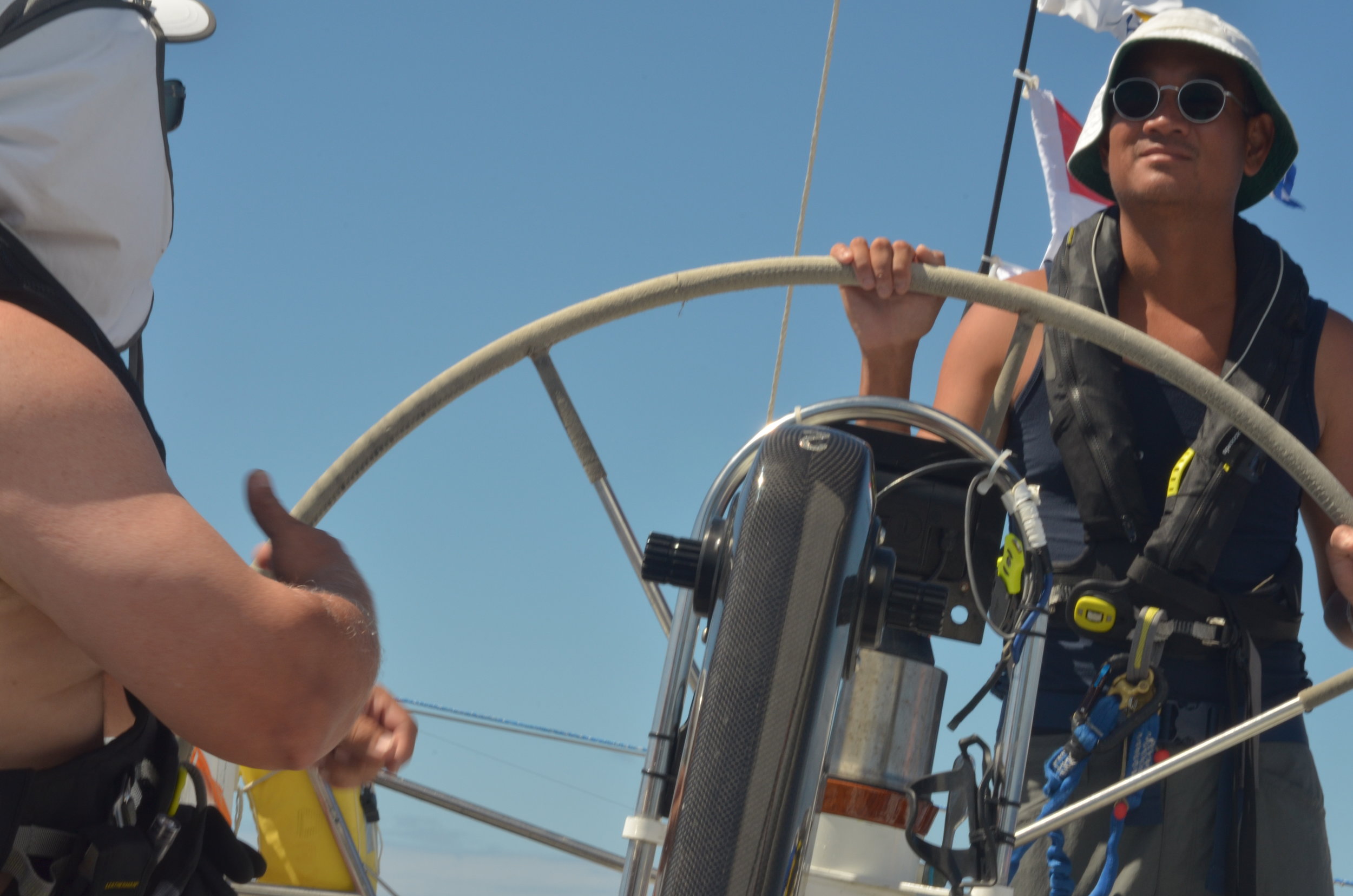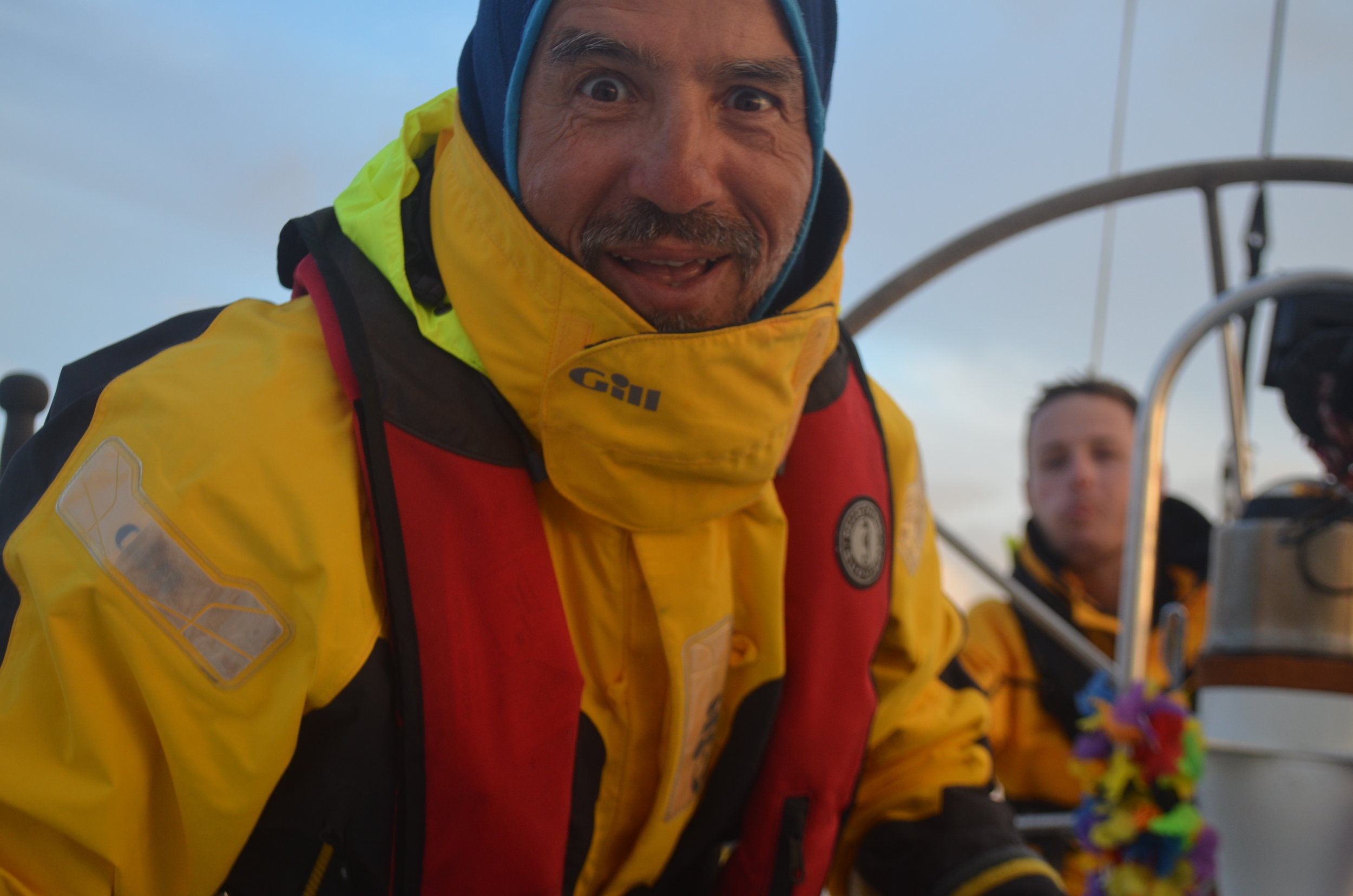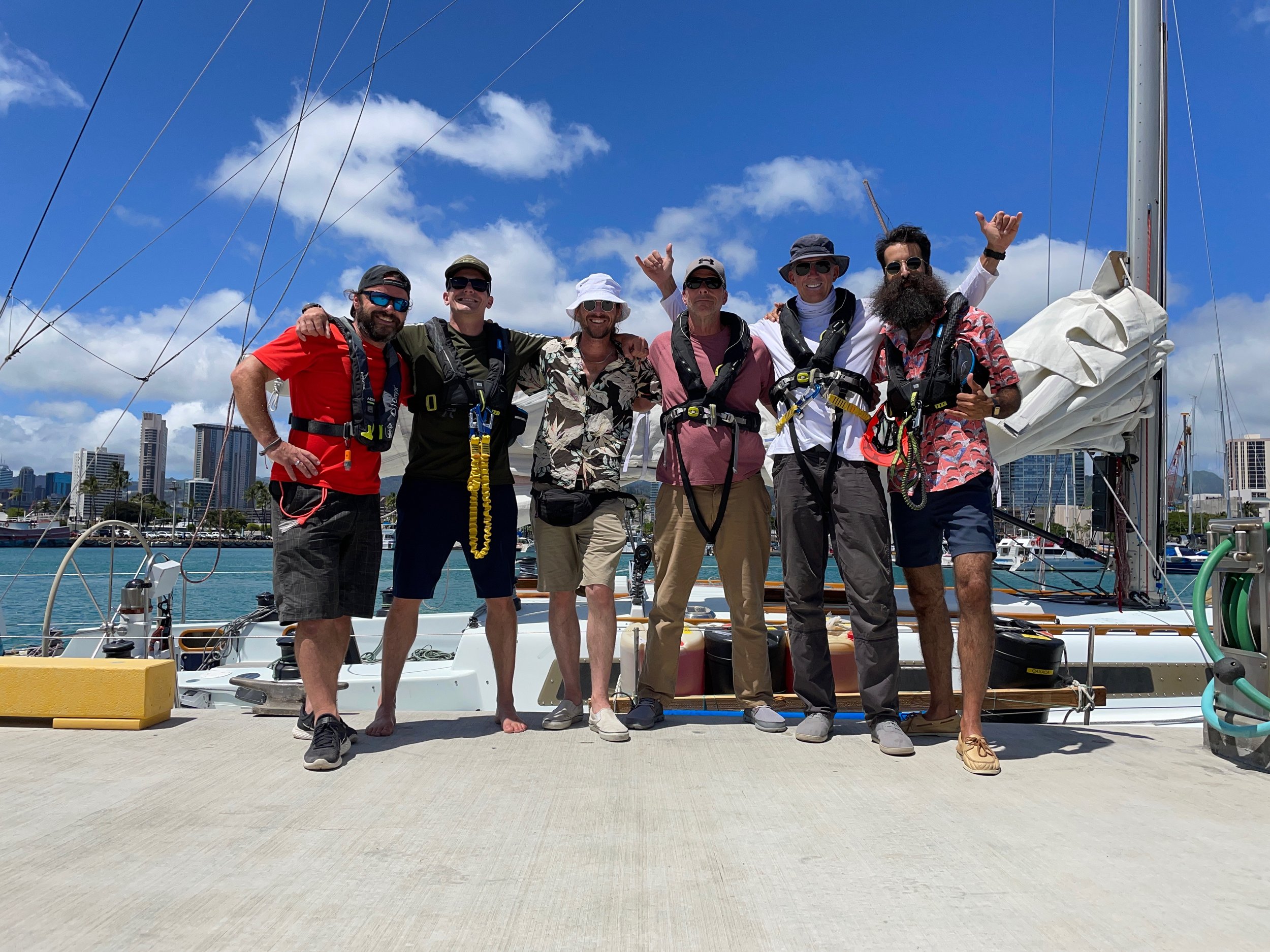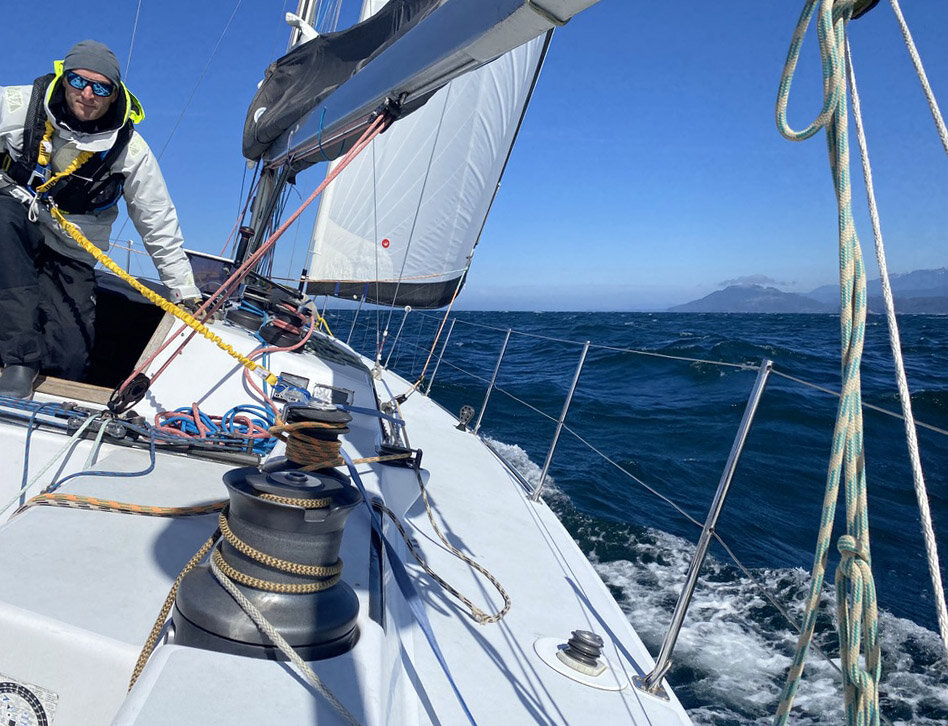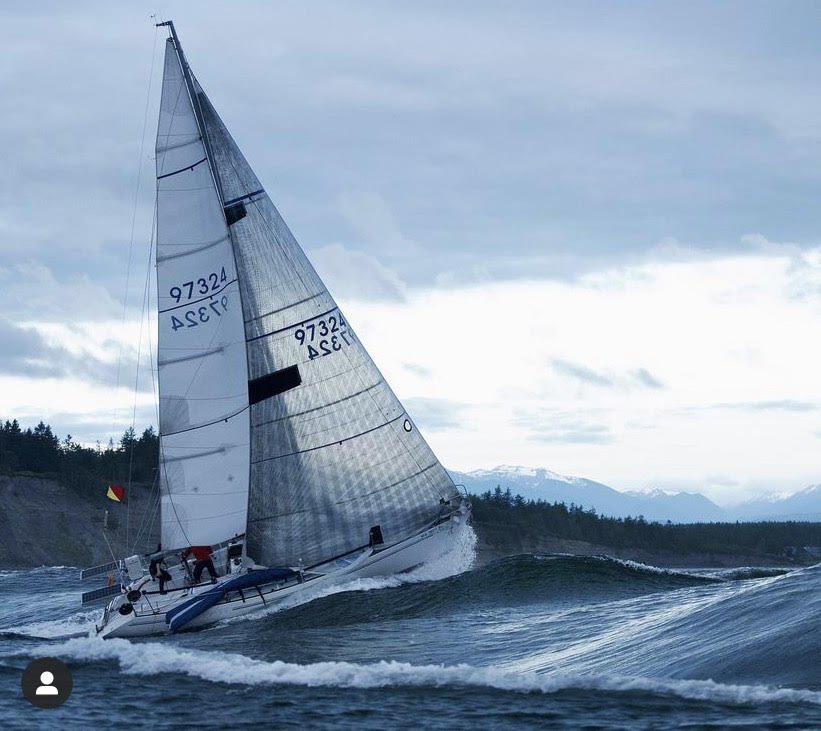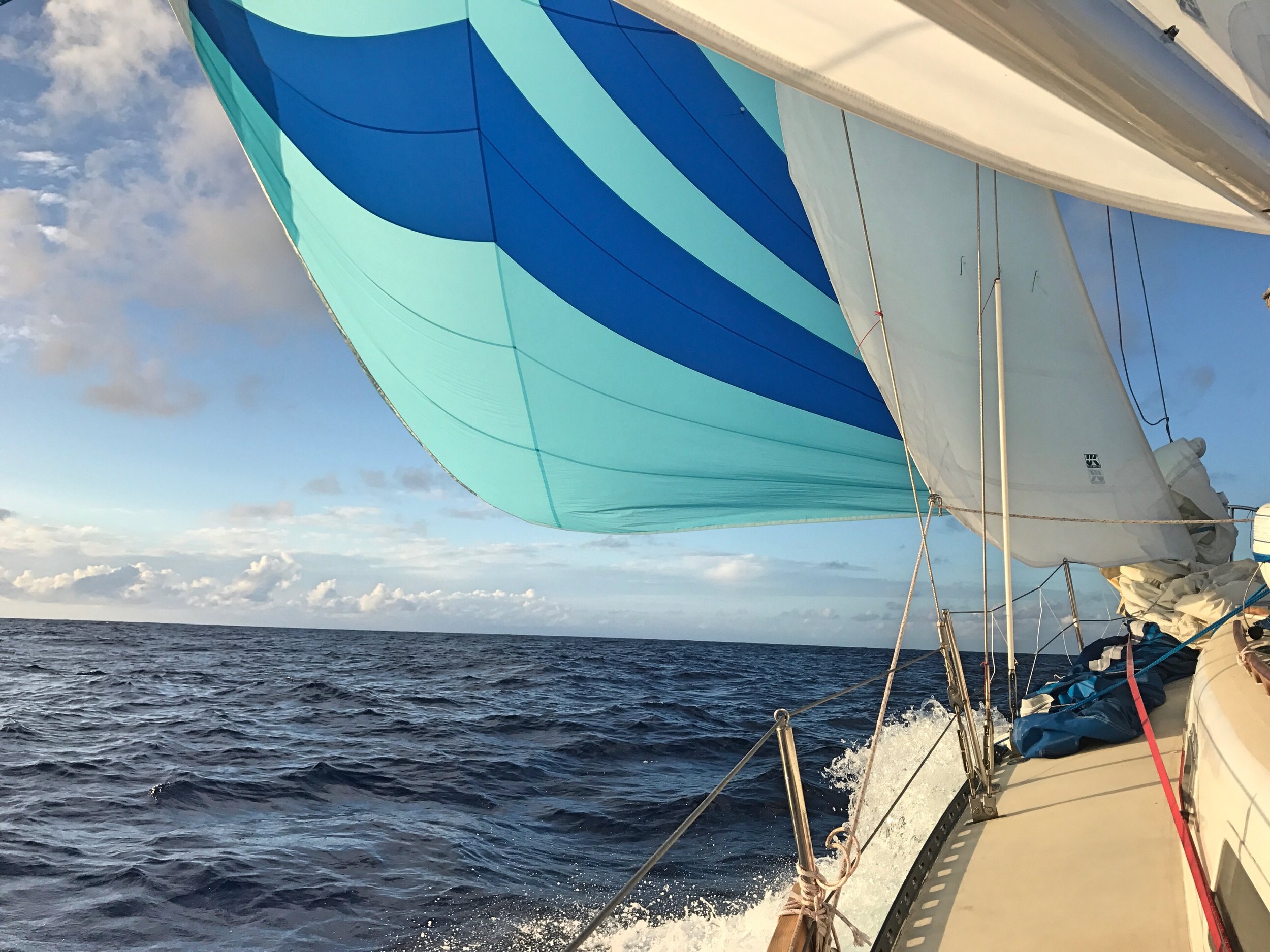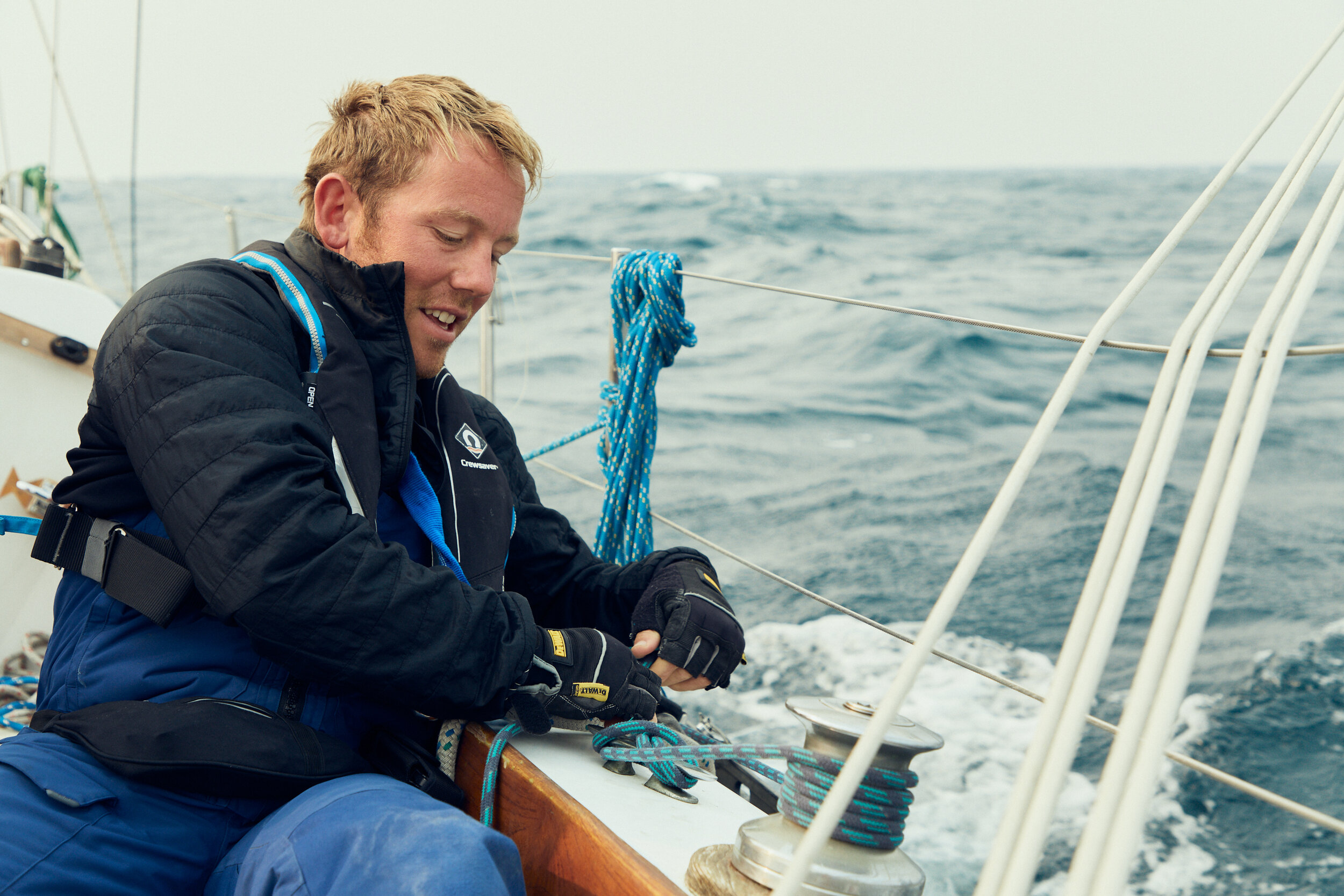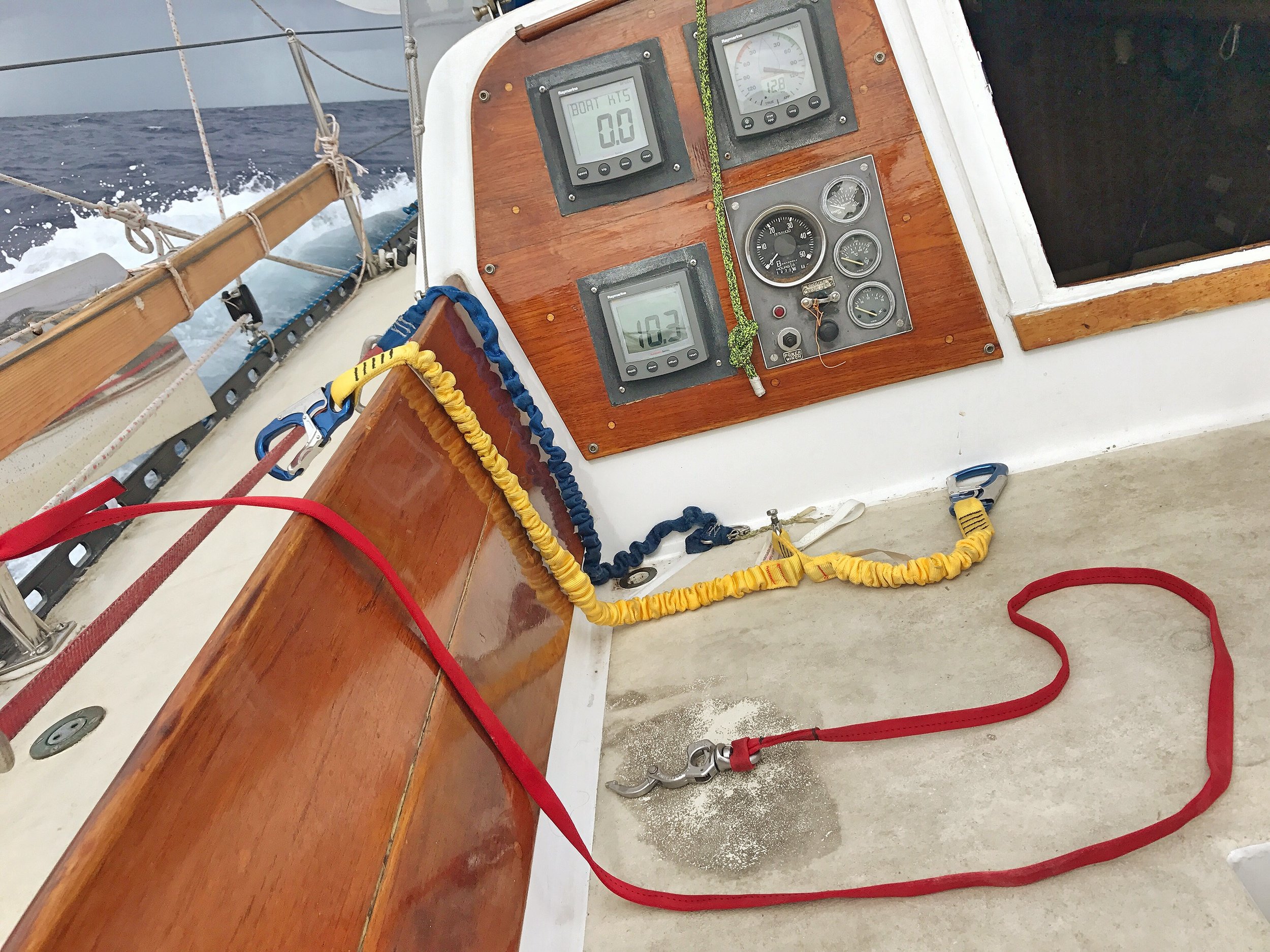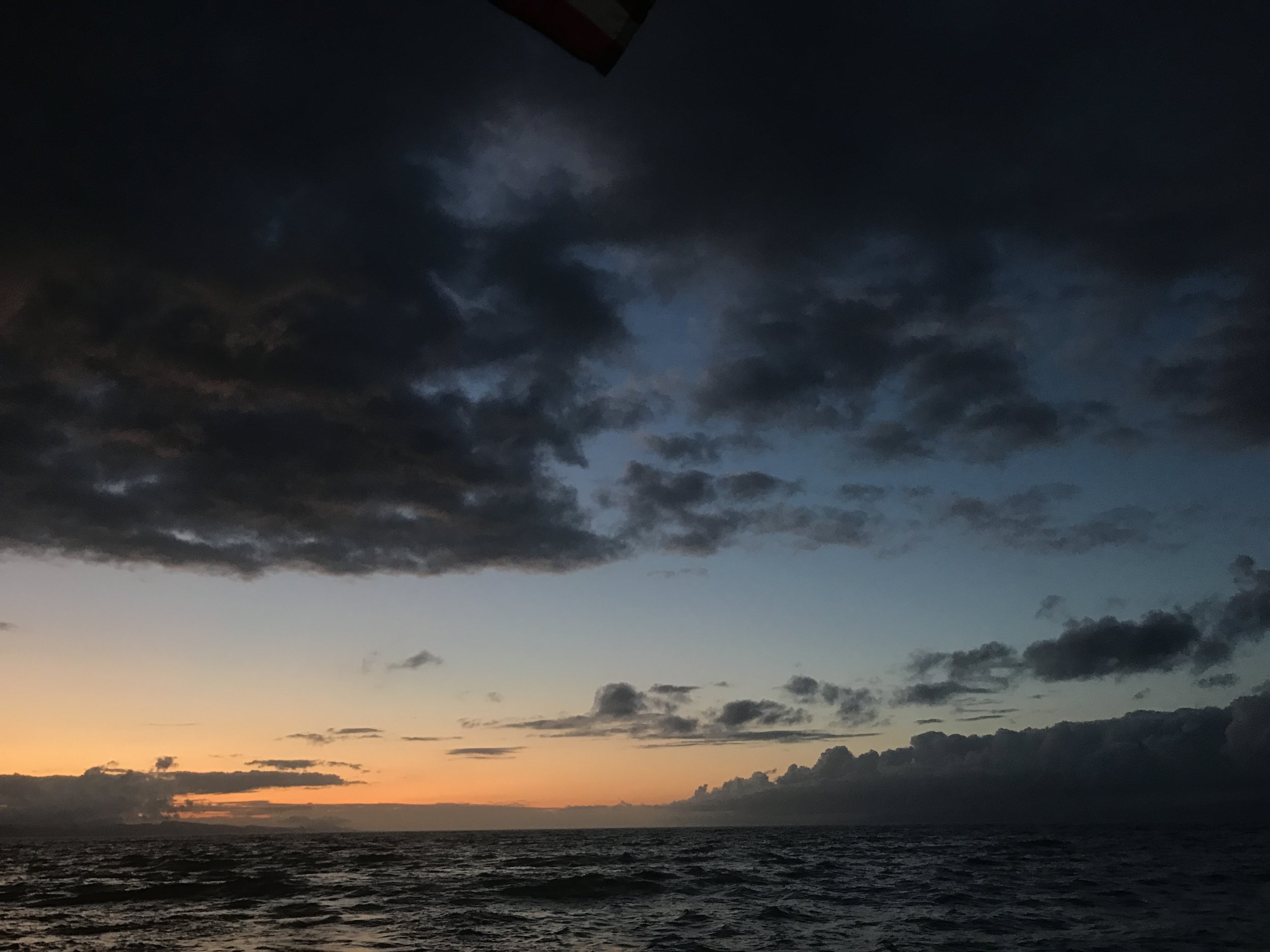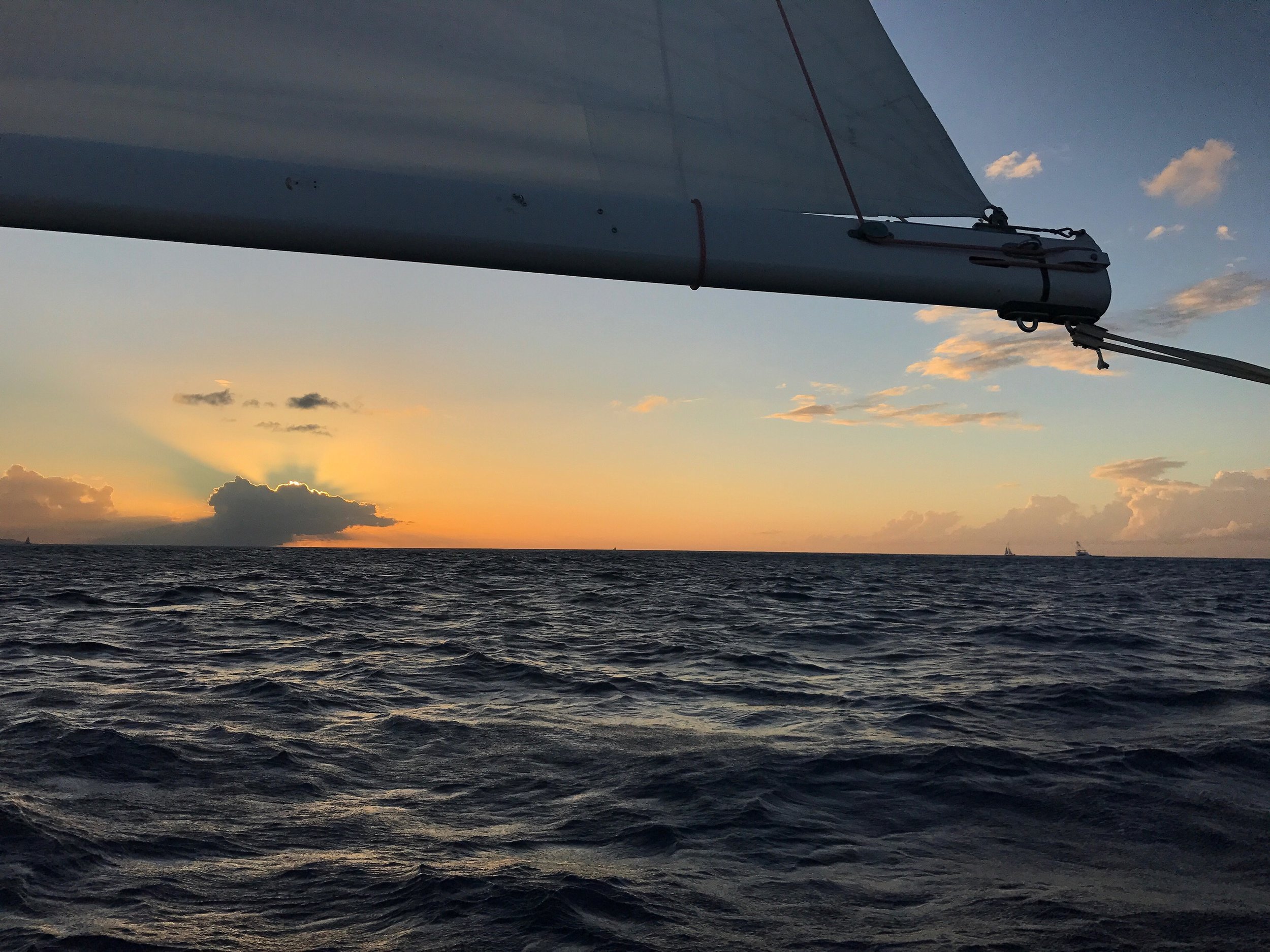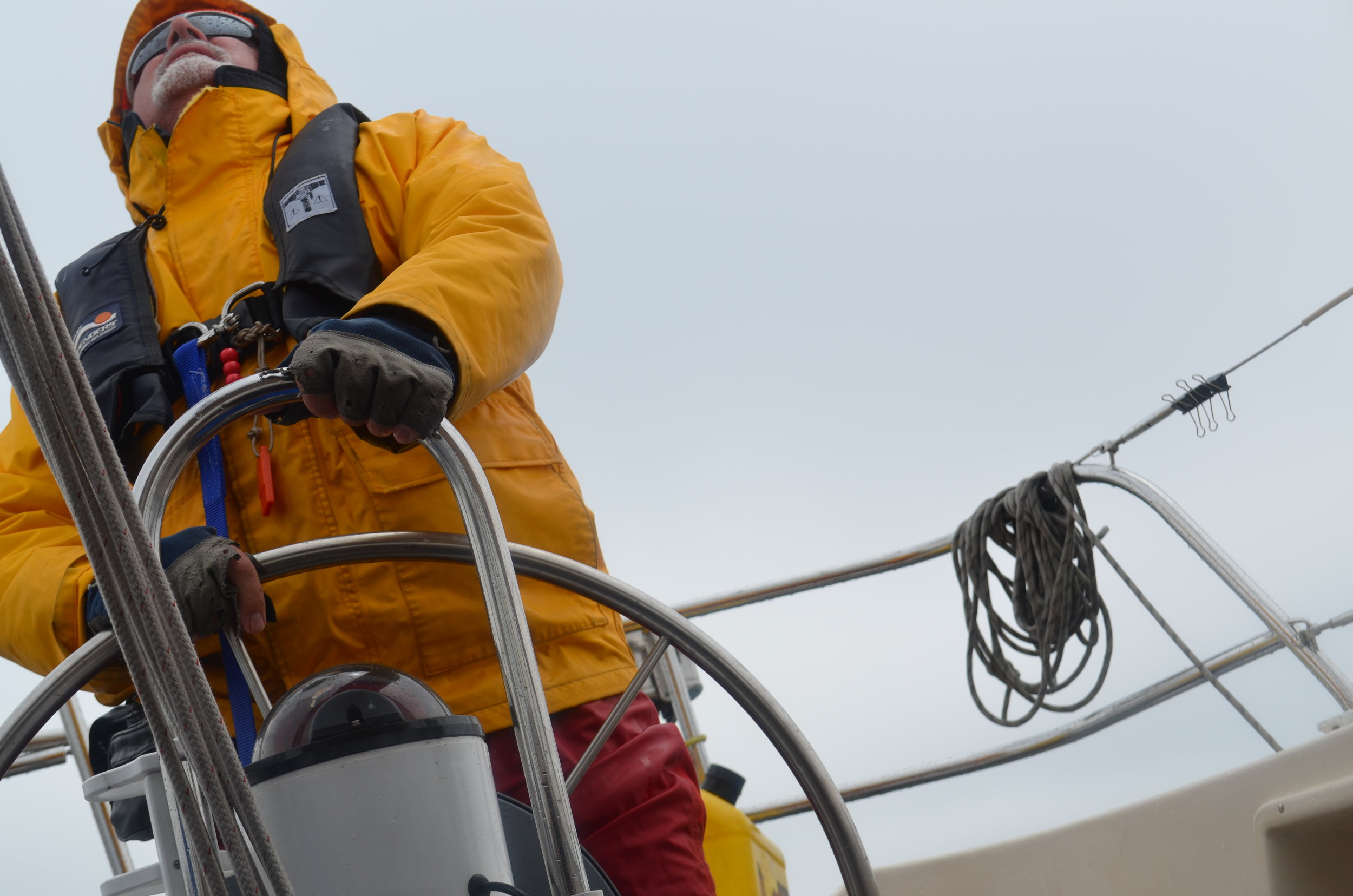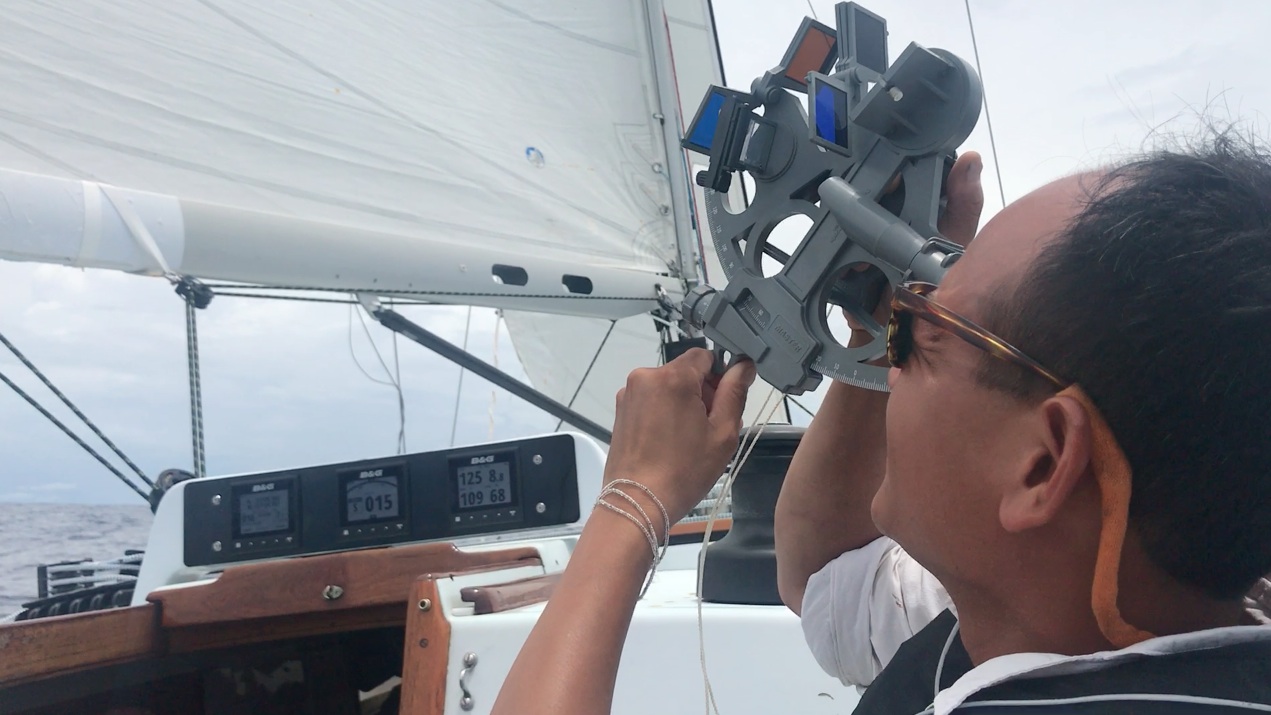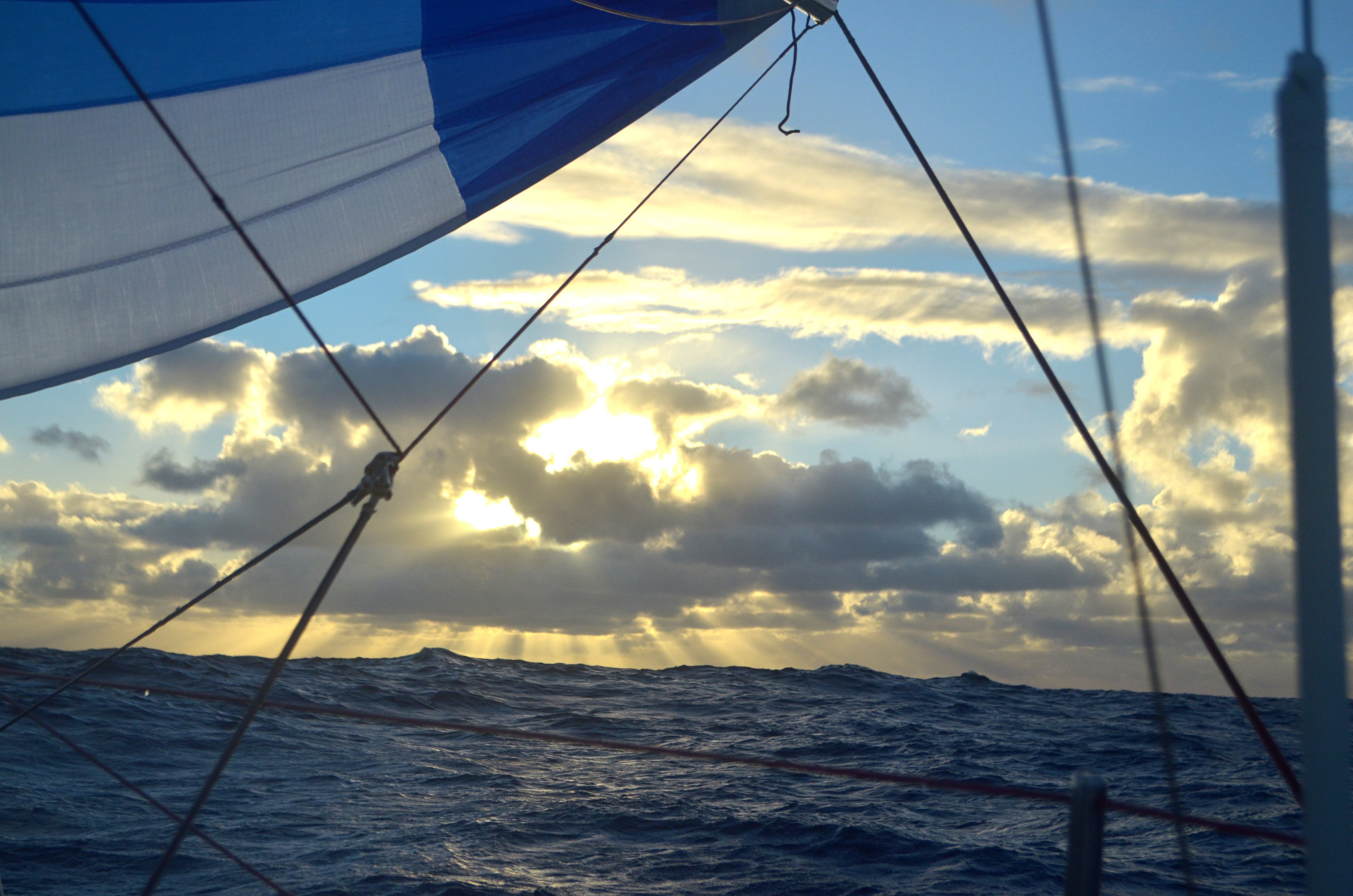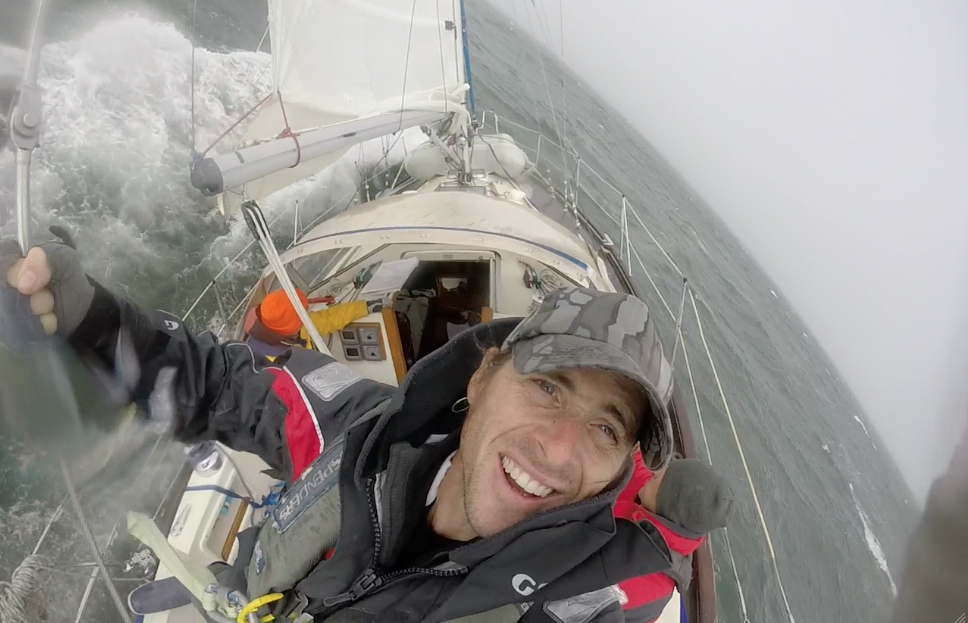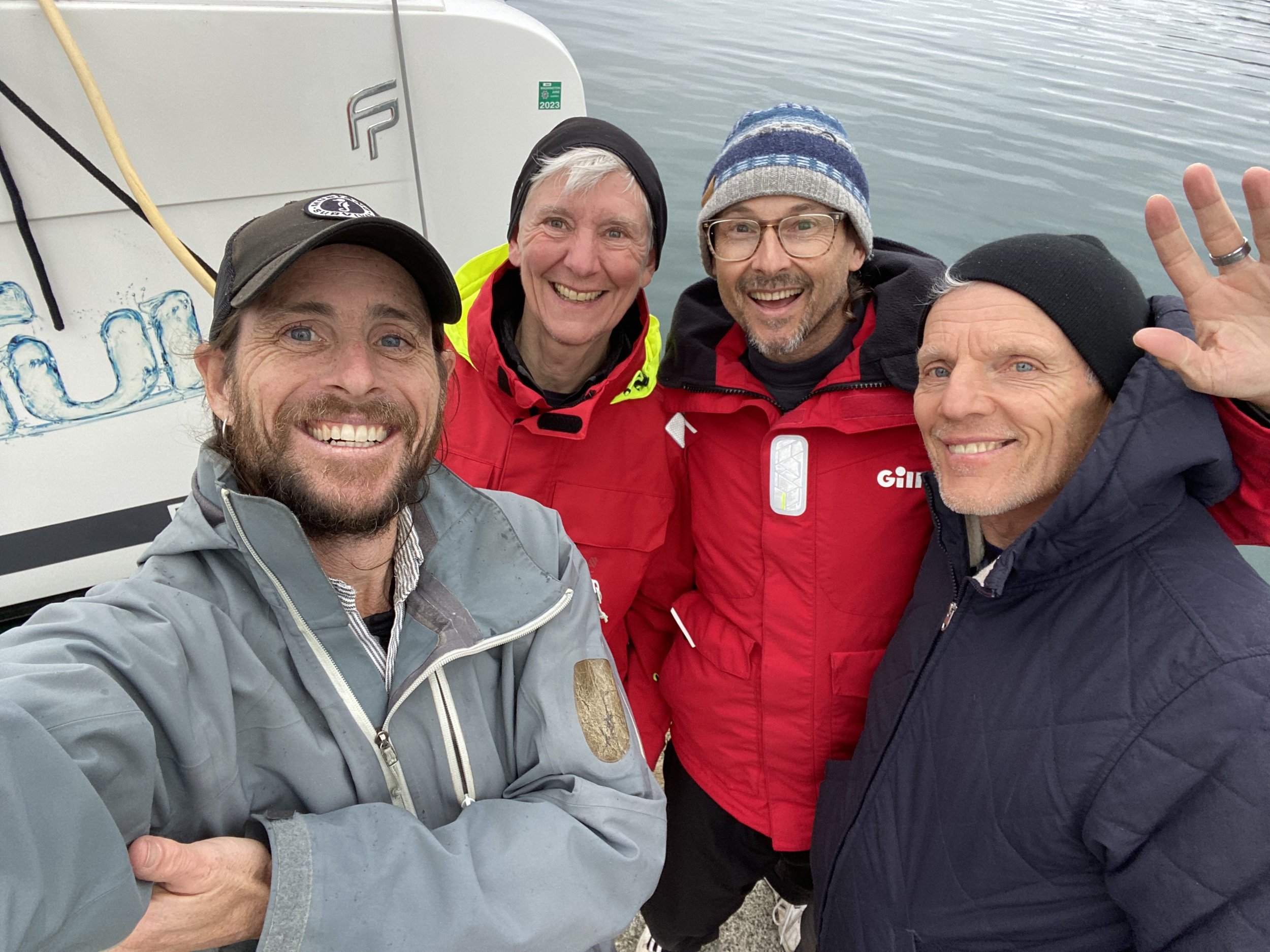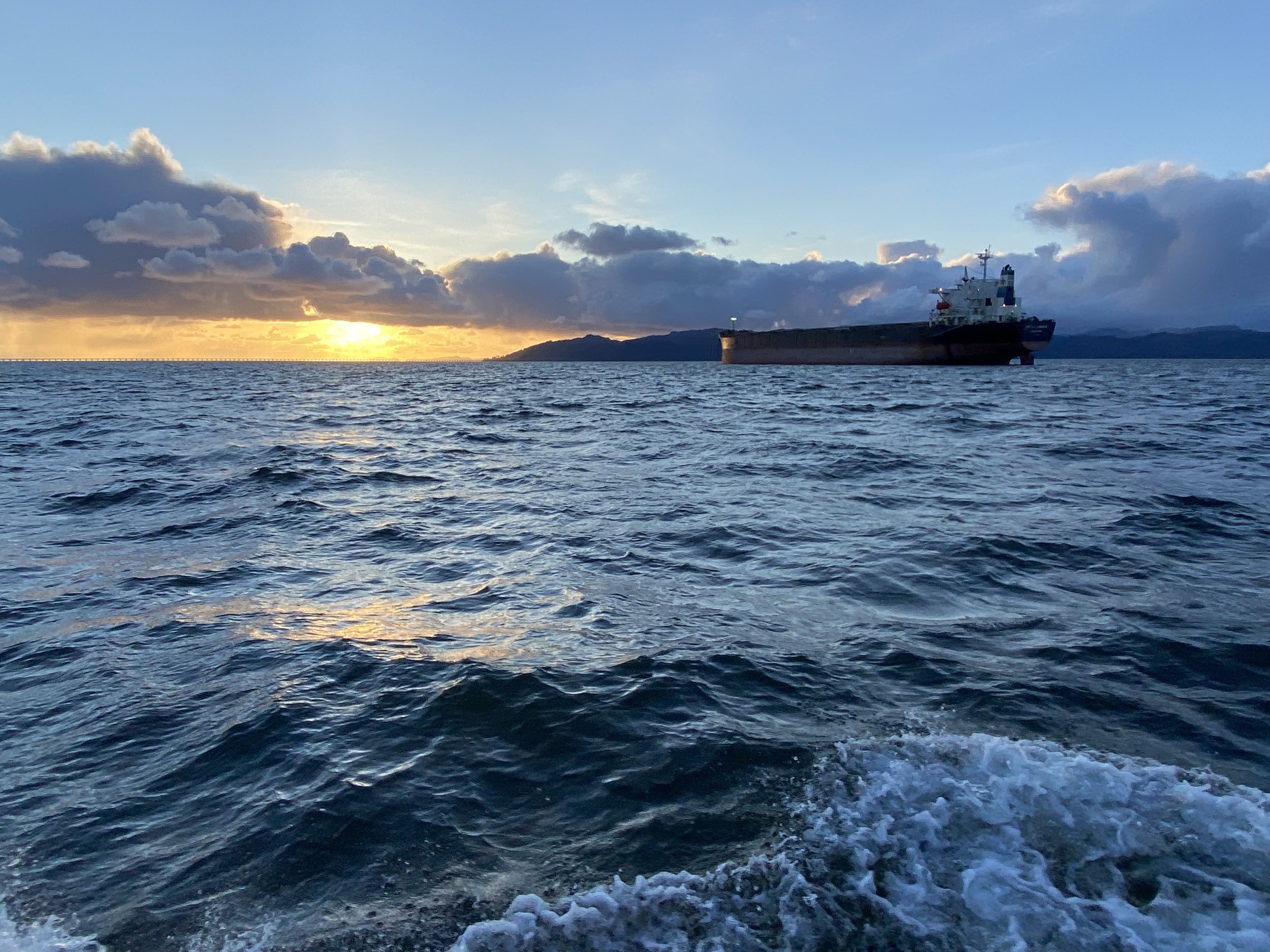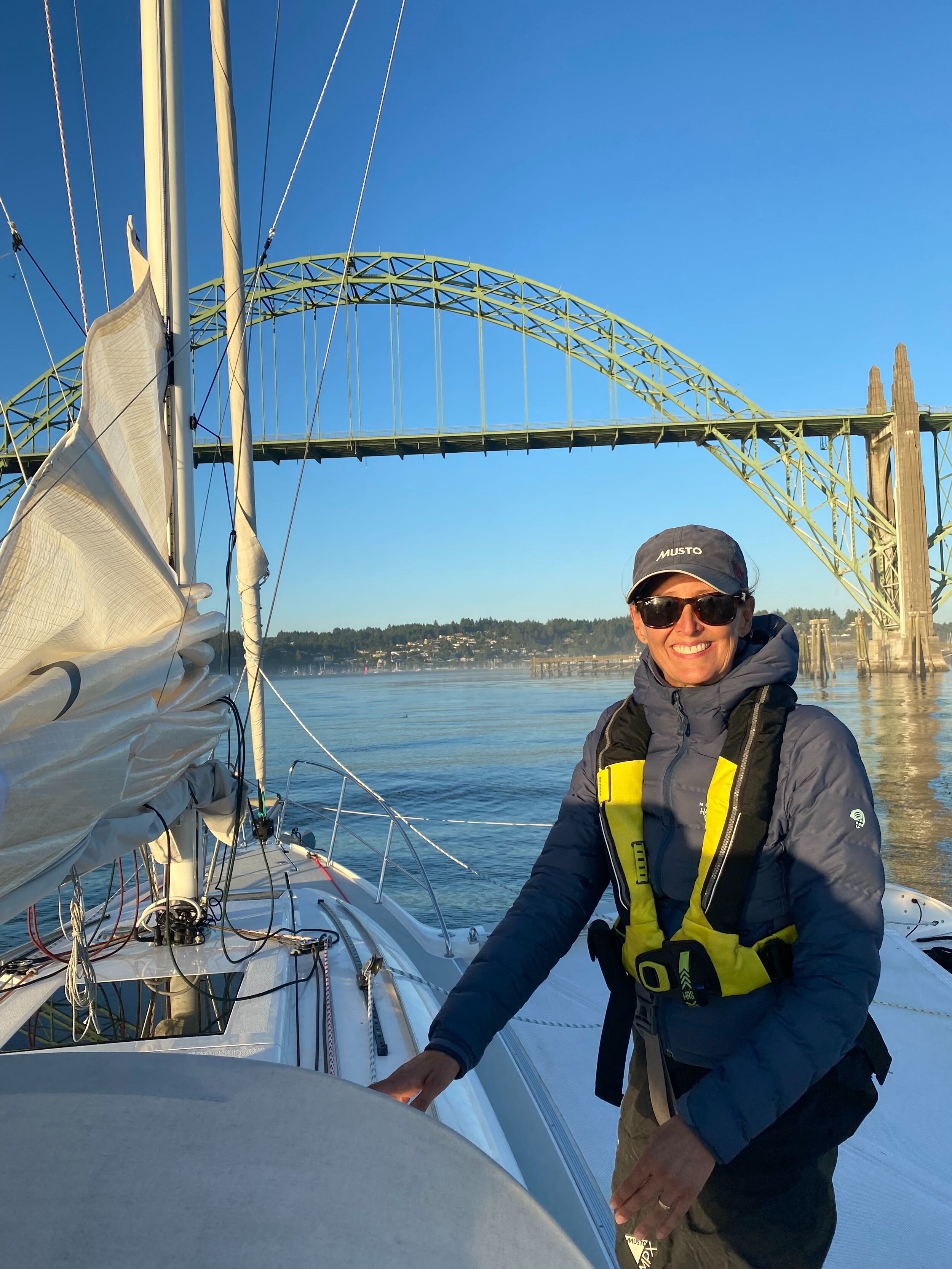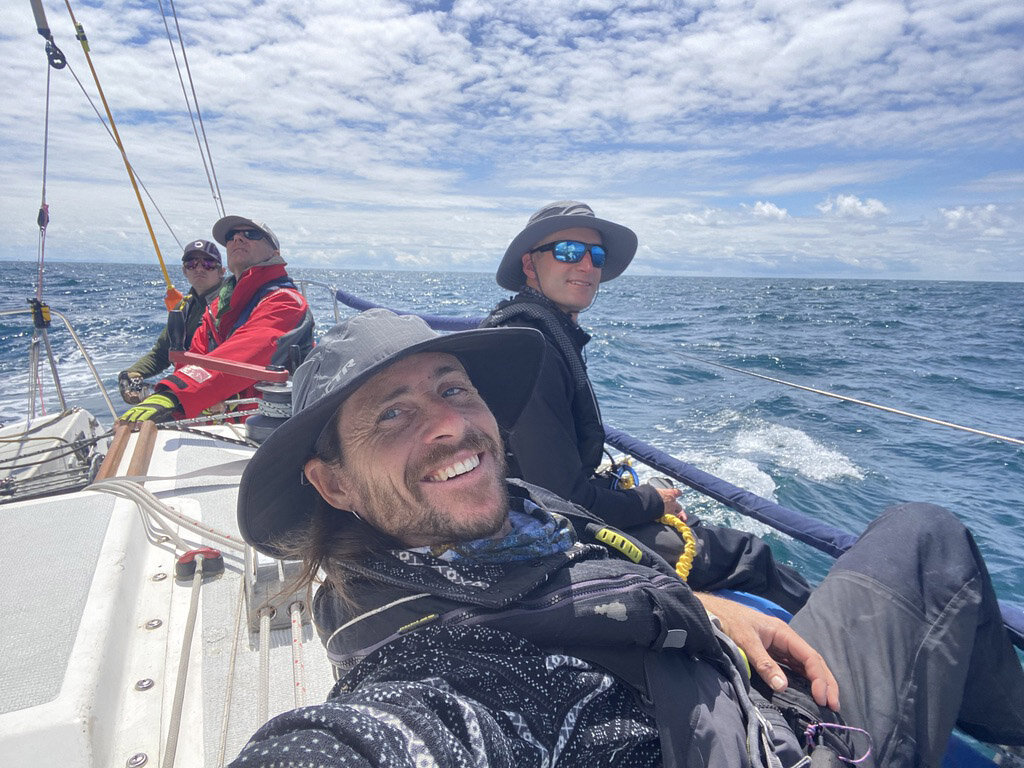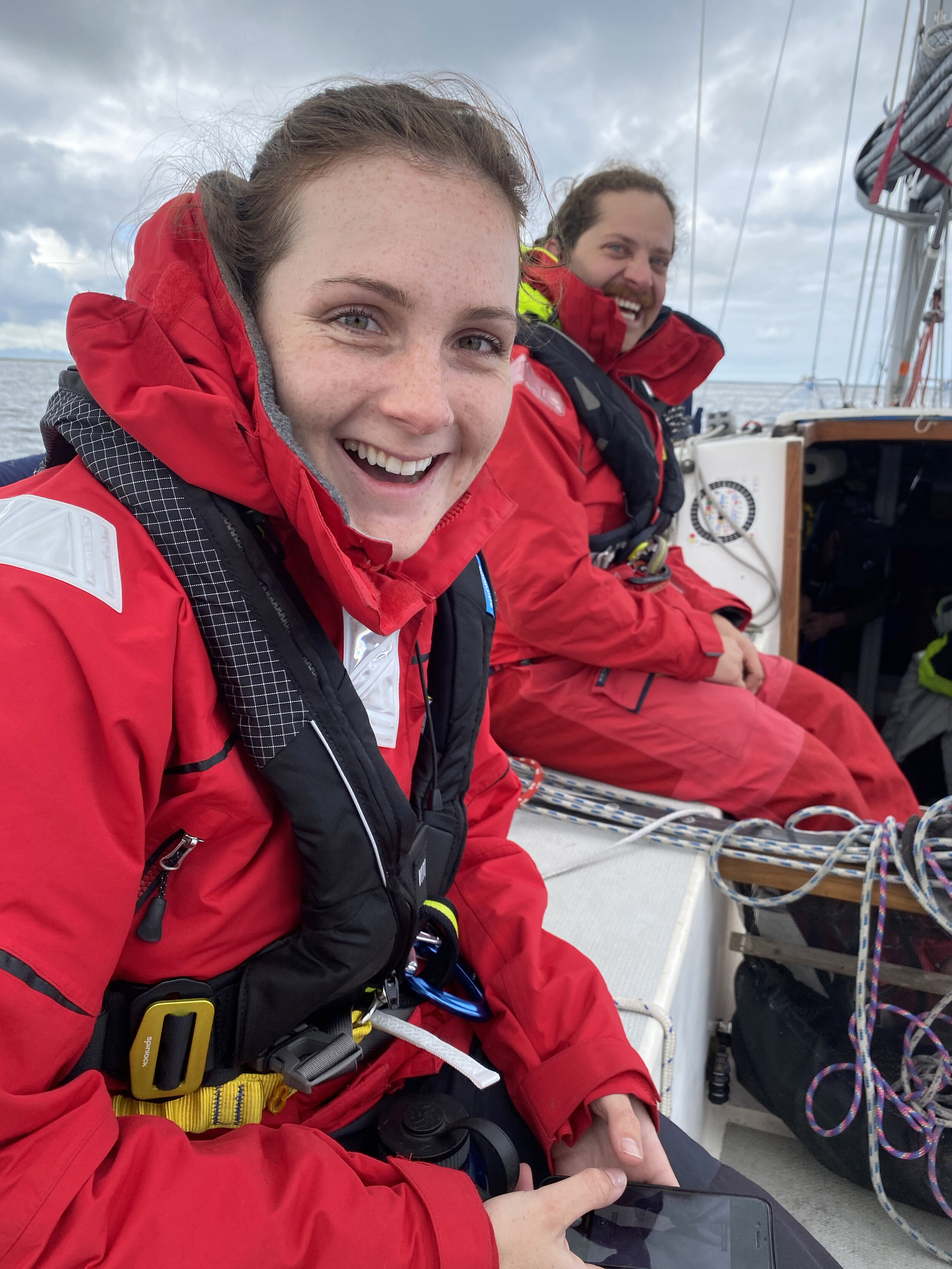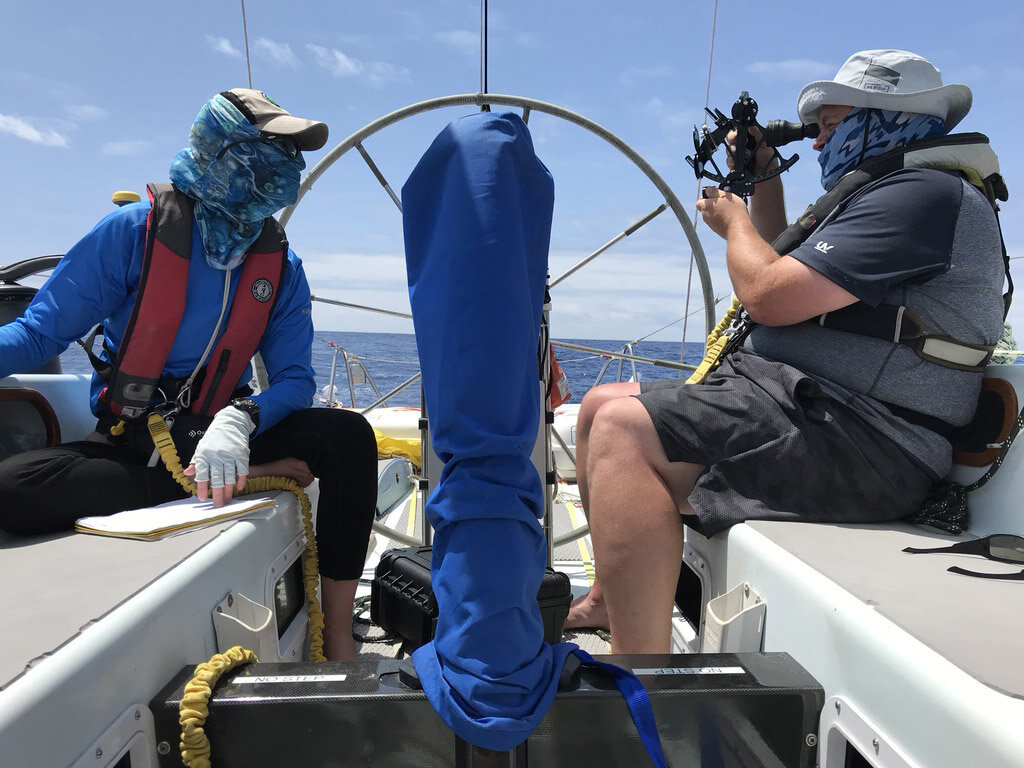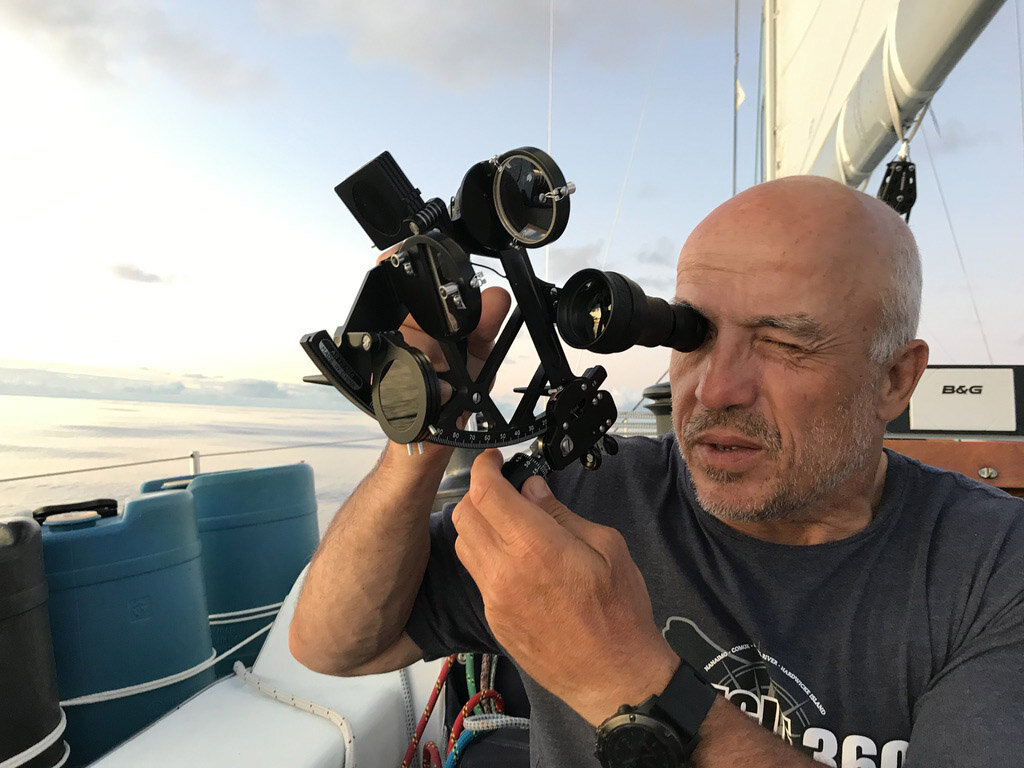ASA 106 Advanced Coastal Cruising
So you want to go offshore
Coastal cruising and ocean passage making both require a great deal of preparation. Any vessel heading out to sea where assistance is hours, or in many cases, days away, must have specialized safety equipment appropriate to the length of the voyage. Often major modifications need to be made to the boat to make it "seaworthy"; capable to contend with the demands that the ocean may put on the vessel. Perhaps more importantly, however, is the preparation of the crew, in the Oxford dictionary we read in the definition of "Seaworthy" that a factor of the seaworthiness of a vessel is the preparation of the crew. For example, a liferaft or an EPIRB (emergency locator beacon) are very valuable aboard when out of sight of land but if the crew does not know how to use them they are useless. Whether you are setting sail for a 5-year voyage around the world or just want to be prepared for any eventuality you might be confronted with coastal sailing, it is essential that all the crew knows how to "hand, reef and steer" as they used to say. At Griffin Bay our focus is the preparation of the crew. We offer American Sailing Association accredited courses to prepare sailors for the rigors of the ocean. We offer Advanced Coastal sailing courses in coastal waters where students can see the challenges of sailing outside of protected waters in a hands-on training voyage.
Subjects:
-Night sailing (learn to steer by a compass or electronic wind instruments).
- Everything having to do with shortening sail (heavy-air headsail changes, multiple reef-line reefing systems, and storm sails.
- Navigation and collision avoidance (traditional and contemporary instruments and radar when applicable)
- Weather and weather routing.
-Preparing a vessel for the ocean.
-Watchmaking and crew prep.
-Provisioning.
-Boat handling at sea.
The following is a list of required subjects from the American Sailing Association’s Advanced Coastal Cruising standard.
KNOWLEDGE
1. Describe true and apparent wind.
2. Describe sailing forces using diagrams. Graphically find the center of effort and center of resistance of sails and keel, respectively.
3. Describe with the aid of diagrams the causes of lee and weather helm and methods of correcting them. Include the reasons for preference of slight weather helm, sail selection (including full sails or reefed sails), mast position, and mast rake.
4. Describe sail shapes and sail interactions as needed for different wind strengths and points of sail. Describe the effects on sail shape and sail interactions when adjusting the following:
Luff tension
Outhaul
Leech line
Boom vang
Backstay tension
Jib fairleads
Jib sheet tension
Mainsheet
Traveller
Downhaul / cunningham
Weather
5. Describe how to use a barometer and a thermometer independently and concurrently to assist in predicting weather.
6. Describe cirrus, cirrostratus, altocumulus, stratocumulus, cumulonimbus and cumulus clouds and the weather expected to be associated with each.
7. Describe local weather in relation to thermal winds and prevailing winds.
8. Describe three sources of weather information available in the United States.
Seamanship
9. Describe the proper selection of sails on a given boat for all weather conditions and give reasons for the selection made.
10. Describe appropriate heavy weather precautions and describe how they are carried out, including:
Sail changes
Use of special equipment such as safety harness and sea anchor
Doubling up of gear
Special checks in areas liable to chafe
Stowage of equipment above and below decks
Additional checks on bilge condition
Special arrangements for towing dinghy/tender (if used)
Problems of fatigue
Selection of clothing
The need of at least two on deck at all times
11. Describe the steps to be taken by skipper and crew for “heaving to” and “lying a-hull.”
12. Describe the methods for rafting at anchor and the possible risks with day and night rafting.
13. Describe how to prevent the dinghy/tender from riding up and bumping the vessel’s hull while anchored at night.
14. Describe procedures for securing a boat overnight with one anchor and stern made fast to a dock or shoreline.
15. Describe two methods of using a second anchor to reduce swinging.
16. Describe four different methods of recovering an anchor that is fouled on the bottom.
17. Describe when and how to use a trip line and an anchor buoy.
18. Describe when and how to set an anchor watch and the responsibilities of the crew on watch.
19. Describe how to:
Prepare a towing bridle
Pass a tow to another boat
Get underway with a tow and which speeds to use
Avoid fouling the propeller
Avoid the danger of towline parting under stress
Make proper lookout arrangements during towing
20. List 8 of the 16 International Distress Signals found in Rule 37 of the USCG Navigation Rules and Regulations Handbook.
21. Describe how the boat should be handled and what actions should be taken when the following emergencies occur while under sail:
The boat is dismasted
The boat runs aground on a lee shore
22. Describe how the boat should be handled and what remedial action should be taken when the following emergencies occur while under power:
The engine cooling water fails to flow
The engine fails in a crowded anchorage
The engine fails in a busy channel
23. State the fuel tank capacity and range of a typical 40-foot cruising sailboat and the factors that could affect its range.
24. State the water tank capacity of a typical 40-foot cruising sailboat and the minimum water requirement per person.
25. Describe the skipper’s responsibilities and action for the following common courtesies and customs:
Permission to board
Permission and entitlement to come alongside
Permission and entitlement to cross adjacent boats when rafted
Rights of the first boat at an anchorage
Keep clear of boats racing
Offering assistance to yachtsmen in trouble.
Flag etiquette: National flag, Courtesy flag, Burgee/house flag, Dipping flag
Checking of boat’s appearance (shipshape & Bristol fashion, no lines or fenders dangling over side)
Duty to provide assistance at sea
26. List the documents required and the procedures followed when leaving and entering U.S. territorial waters.
Engineering
27. Describe appropriate measures for the following common engine problems:
Stoppage in the fuel line
Burned and defective points
Fouled spark plug/injector problems
Carburetor icing (spring and fall sailing)
Unserviceable starter
Electrolysis
28. Describe when and how to carry out an oil change.
29. Describe the minimum pre-season inspection and maintenance for the following:
Hull (including underwater fittings, electrical systems, painting, and antifouling)
Spars and rigging (including electrolysis)
Sails
Safety
30. Describe recommended permanent and temporary installation methods of grounding for lightning.
31. List factors to be considered before allowing anyone to go swimming while the boat is at anchor.
32. Describe the danger of overhead power lines.
33. Describe the uses, capabilities, and limitations of a portable radar reflector.
SKILLS
Boat Handling Under Sail
34. Perform the duties of skipper and crew on a liveaboard coastal cruise of at least 48 hours, including night sailing.
35. As helmsman, demonstrate the proper techniques of beating, reaching, running, tacking, jibing, heading up, bearing away, and luffing in approximately 20 knots of wind.
36. Work to weather to best advantage accounting for wind shifts, tides, current and local geography.
37. Sail a compass course within +/- 10 degrees with sails trimmed.
38. Demonstrate correct methods of towing a dinghy.
39. Demonstrate a person in water (Man Overboard or MOB) recovery maneuver while sailing at night.
40. Anchor, weigh anchor, pick up, and cast off moorings while acting as helmsman and/or crew.
41. Demonstrate how to take a sounding using two different methods.
42. Stand a navigation watch during a passage of at least 20 miles by night and 20 miles by day and demonstrate all of the skills elements in ASA 105, Coastal Navigation.
43. (Optional) Demonstrate correct procedures for hoisting, setting, trimming, jibing, dousing and packing a spinnaker.

